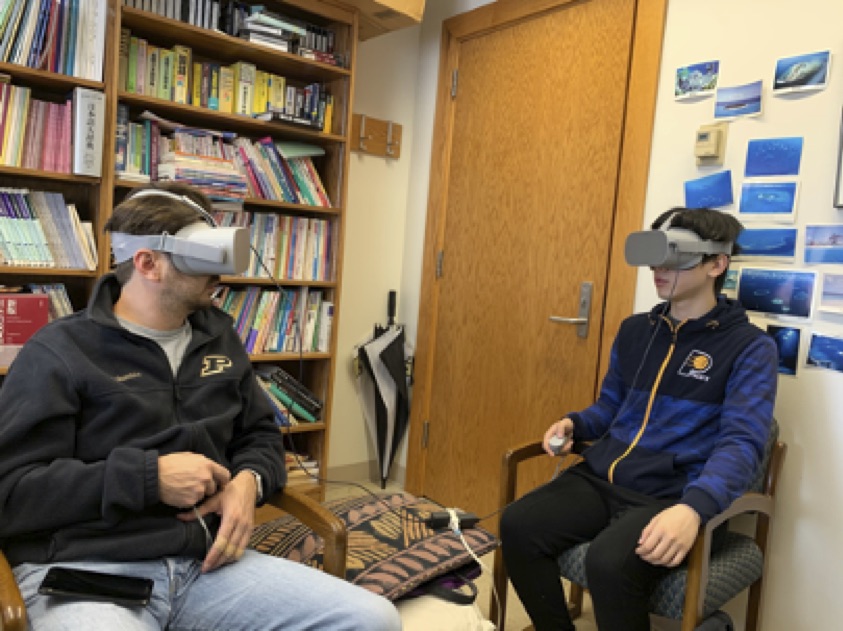Virtually visiting Japan
Incorporating VR into cultural learning helps students gain better understanding of places they study

Walking through his hometown of Tokyo, you might see some of Kazumi Hatasa’s old haunts. A restaurant with carefully crafted dishes, welcoming neighborhoods he explored with friends, the beautiful nature he enjoyed. But then you slip off your headset and remember that you never left West Lafayette.
For Hatasa, chair of East Asian languages and a longtime instructor of technology-enhanced learning, this is his goal. Through use of virtual reality (VR), he is able to take students on a virtual trip to Japan, potentially increasing their interest in the nation and maybe even inspiring them to travel there — without the need for virtual reality glasses. Of course, with much travel being limited by the coronavirus outbreak, these VR experiences can serve as an intriguing supplement for now.
“In doing work on virtual reality, I have been playing with Oculus, the company which makes immersive technology, and doing it in conjunction with software called Wander that brings all data from Google Street View into 360 [degrees of viewing capability],” Hatasa said. “Once you run Wander in the Oculus virtual-reality environment, you will be placed in any location that Google Street View has and have a 360 view from that vantage point.
“It also allows multiple players in the same environment, so I can lead a group of students to follow me as I show them Japan, or I can follow one of them by assigning someone in the group to be a leader on a ‘tour.’ It also allows verbal communication among us so you can hear the voices among the members who are participating.”
Hatasa also appreciates how the software can reveal changes to a city. One goal he has when the technology is fully ready is to show students the effects of a 2011 tsunami in Japan. He can show the same area both before and after the event, allowing viewers to understand the devastation and power of recovery.
“Think about witnessing this with the whole scene changing in front of their eyes,” he said. “It really gives you a sense of a community coming together."
Atsushi Fukada, director of Purdue’s Center for Technology-Enhanced Language Learning and Instruction (TELL Center), is interested in using virtual reality in all language instruction.
“In the field of language teaching, we talk a lot about ‘authenticity’ as an important concept,” he said. “For example, giving directions is a very common activity in language classrooms. We might tell students to give directions from the Tokyo Station to the Imperial Palace. They try to look at a map and maybe a few photos of buildings and use their imagination to do the activity. This is about the best we can do within the confines of the classroom. Now through the VR technology, we can literally put the students in front of the Tokyo Station, have them look around, walk this way and that way, etc. In this way, VR has the potential to help reach a level of authenticity never conceived of previously.”
Or, consider a project to present a famous site to classmates. “Instead of a PowerPoint presentation, they can become a tour guide and virtually take the classmates to the spot and present it,” he said.
Graduate student Samet Baydar, who teaches Japanese, drew inspiration from the VR elements included in a course titled Applications in Japanese Language Instruction. That experience encouraged him to experiment with VR, and he even considered the subject for his master's thesis.
“It definitely takes learning to a different level, understanding in real time what’s going on in the world,” Baydar said. “It takes a description and really pulls you in.”
Baydar found himself, like other college students, in an adjusted learning environment brought about by the coronavirus. He said he appreciates how VR can be a complementary tool for learning in this time period, particularly for those who might be restricted from travel due to the pandemic.
“You just put on your headset and the applications can take you so many places,” he said. “You don’t need a ticket. You want to do something, regardless of the time you have, and now you can ‘take off.’ That’s amazing. That’s an experience.”


